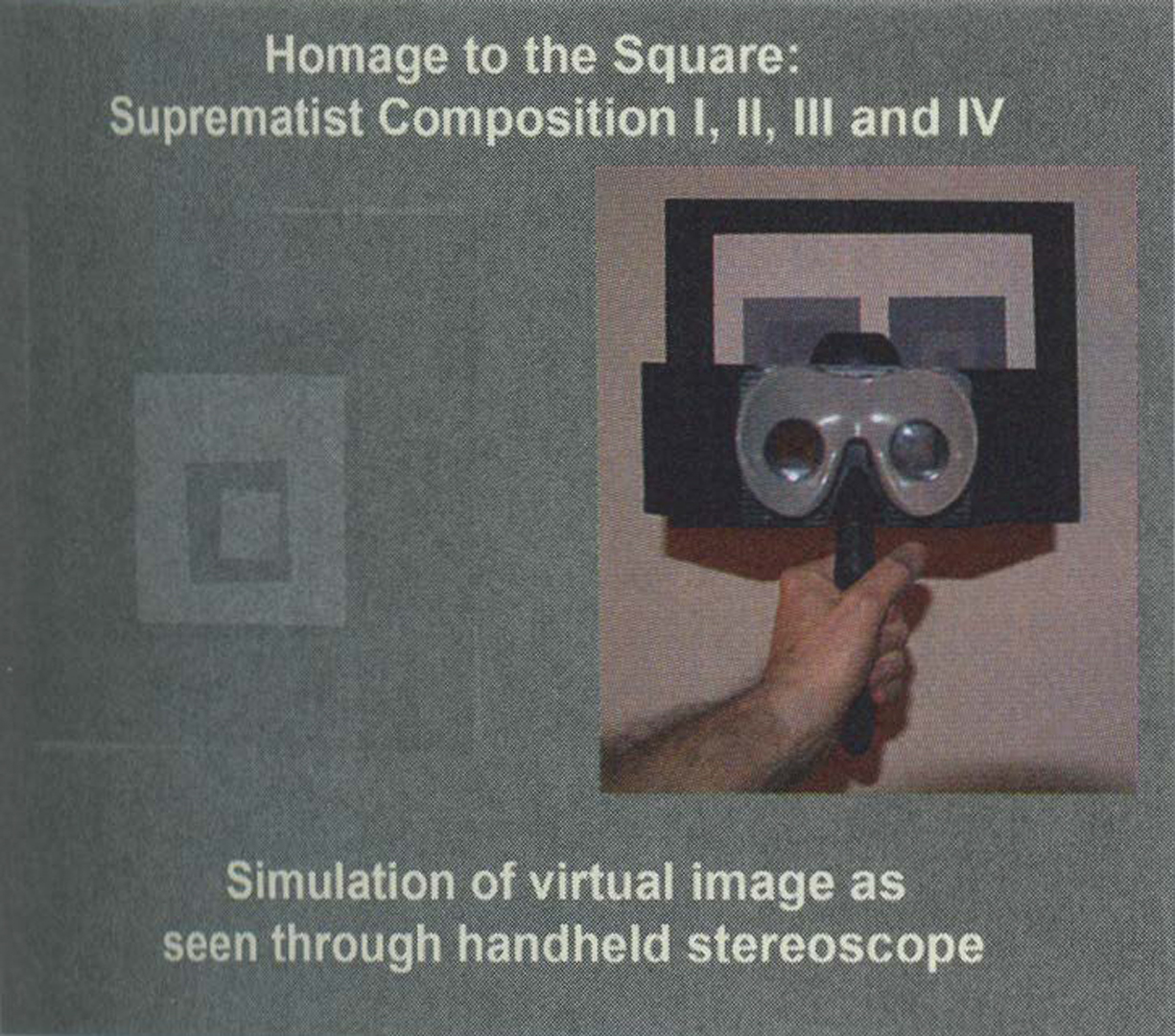Gregory P. Garvey: Homage to the Square Stereoscopic Suprematist Composition
Artist(s):
Title:
- Homage to the Square Stereoscopic Suprematist Composition
Exhibition:
Creation Year:
- 2005
Medium:
- Inkjet print
Size:
- 14 inches x 11 inches
Category:
Artist Statement:
HOMAGE TO THE SQUARE: STEREOSCOPIC SUPREMATIST
COMPOSITION II revisits the reductionist impulse of 20th-century modernism, literally through the “lens” of cognitive and perceptual psychology. To the unaided eye, the prints depict different sized squares that have different shades positioned side by side. When viewed with the handheld stereoscope, the different-sized squares, seen separately with each eye, are fused into a single “virtual” image
of squares nested one inside the other. It is not a stereoscopic 30 illusion. Instead, a kind of 2.50 space is perceived. The squares appear to slowly slide over or behind the other as the brain’s visual apparatus strives to maintain a single coherent view that exists “only in the mind’s eye.” As seen in the Suprematist Compositions of Kazimir Malevich, the mid-century Homage series by Joseph Albers, and the later minimalism of Ellsworth Kelly, the square has held a special attraction for successive generations of artists. Malevich considered the square the most elementary formal element of a creative art striving toward the “supremacy of pure sensation.” Echoing the empiricism of Bishop Berkeley, Malevich wrote in 1915: “Nothing is real except sensation … the sensation of non-objectivity.”Albers systematically used the square to investigate vision. By means of color contrasts, he created advancing and receding shapes that engaged the viewer’s private visual mechanisms. Cornelia Lauf suggests: “This shift in emphasis from perception willed by the artist to reception engineered by the viewer is the philosophical root of the Homage to the Square series.” Ellsworth Kelly’s single saturated color panels with a matte finish are exhibited singly or in multi panel arrangements. Kelly pursued a rigorous anti-illusionistic approach to eliminate figure-ground relations from his “painting-objects.” How does the brain create what Steven Pinker refers to as the monocular cyclopean image? When each eye sees significantly different images that cannot be combined into a single coherent cyclopean image, binocular rivalry and hemispheric dominance suppress one image so that a coherent view is maintained. This work seeks to investigate what happens when there are two related but different images.







